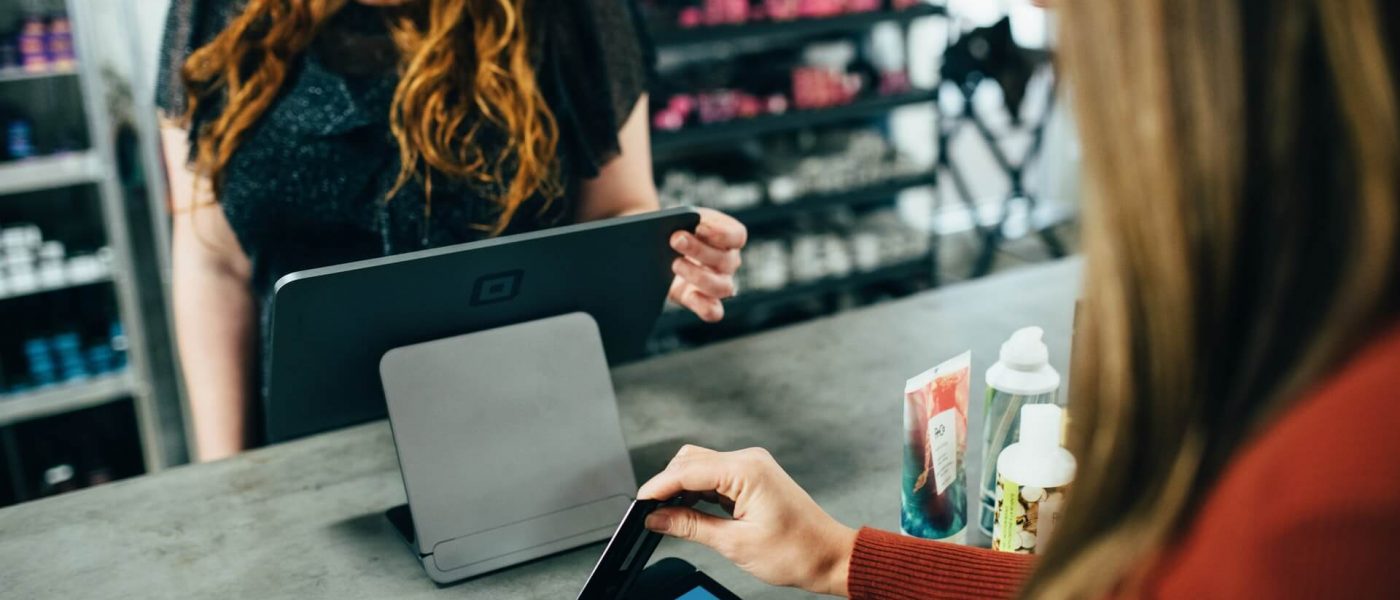Creating customer loyalty is one of the most brilliant things that a brand can focus on in 2021.
Looking at the latest customer loyalty stats can give you a great insight into what people want to see from your business today and what you can do to create an emotional connection so that they stick with you in the long run.
So, without further ado, let’s dive right in.
Worth-Knowing Customer Loyalty Statistics (Editor’s Pick)
- 80% of future profits will come from just a fifth of loyal customers.
- A 5% rise in customer retention can lead to a 75% increase in company profitability.
- 80% of millennials and almost 75% of baby boomers prefer getting rewards for their engagement with favourite brands.
- 74% of consumers say they’re loyal to a brand due to its product quality.
- 33% of consumers abandon a brand that lacks personalisation.
- 4 out of 5 companies agree that retaining loyal customers is cheaper than acquiring new prospects.
- 77% of consumers in the UK are loyal to a brand even if its app is not on their phone.

General Statistics on Customer Loyalty
Delivering great value that creates a positive customer experience and satisfaction is key to retaining customers. Let’s look at the following figures and what they’re saying about customer loyalty that you might find helpful.
1. 80% of the future profit will come from just a fifth of your loyal customers.
(Zinrelo)
Read that again, slowly. Customer loyalty data shows a massive 80% of your future profit will likely come from only 20% of your loyal customers. It’s a great reason to treat your loyal customers like royalty.
2. A 5% rise in customer retention can lead to a 75% increase in company profitability.
(Bain & Co)
When it comes to the extent of the economic impact of a loyal customer, stats show it’s enormous. Increasing your customer retention by just 5% can increase your company’s profit by a whopping 75%. That’s how impactful it is to keep your customers happy, and it’s a key factor for business growth.
3.13% of unsatisfied customers will tell 15 or more people about a poor customer experience.
(Beyond Philosophy)
Here’s one of the vital customer service facts every business must know. A substantial minority of unsatisfied customers will tell a lot of people about a poor customer experience. As a result, your business’s reputation could be adversely affected. Unfortunately, customers tend to be far more vocal about bad experiences than good ones. At least that’s what these customer experience statistics suggest.
4. 88% of consumers will not buy from companies that don’t respond to complaints on social media.
(Social Media Today)
We know how powerful social media is. Whatever you share or do on social media can either make or break your business. That includes your responsiveness to complaints. That’s why more companies are taking social media into consideration in their digital marketing roles.
Customer loyalty statistics show almost 90% of customers won’t buy from companies that are not responsive to complaints on social media. While responding quickly matters, a carefully constructed response is equally important.
5. 95% of loyalty programme members want to engage with the programmes via virtual reality, wearable devices, and other cutting-edge technology.
(Access Development)
Loyalty programme statistics prove that your loyalty programme should be more than a card you stamp. Customers want to be able to engage with programmes in various ways. Most of these involve advanced technology. Therefore, investing in these accessible devices helps to keep your customers satisfied.
6. 61% of shoppers would stop purchasing from a retailer if it has a flawed website functionality.
(Access Development)
Increasing customer loyalty is about even the smallest of details, such as having a fully functional website with no issues. Since customers can now shop through their computers or mobile phones, the functionality of a store website matters to them. A flawed website functionality creates a bad customer experience and can drive customers away.
7. 80% of millennials and almost 75% of baby boomers prefer getting rewards for their engagement with favourite brands.
(L.inchpin)
Speaking of customer loyalty trends, 2021 suggests the inclusion of gamification into a business’s loyalty programme. This came after a survey revealed that 80% of millennials and nearly 75% of baby boomers expressed interest in getting rewards for brand engagement aside from the purchases they made.
By leveraging gamification marketing, brand companies can drive engagement, resulting in increased customer loyalty.
8. 74% of consumers say they’re loyal to a brand due to its product quality.
(Finances Online)
Figuring out how to increase customer loyalty doesn’t have to be complicated. The above statistic proves that product quality is the most influential factor of brand loyalty. A high-quality product provides value to customers, solves their problems, and satisfies their needs.
Surprising Customer Loyalty Statistics in 2020
The year 2020 was filled with surprises. Let’s see some of those in terms of customer loyalty.
9. 42% of consumers reduced their purchase of premium brands in 2020.
(Accenture)
Many individuals became unemployed in 2020. This is one of the reasons why consumers are more cost-conscious now in their purchases. As a result, 42% of those who buy premium brands reduced their purchases, while 29% of consumers shifted to budget brands. This could negatively impact customer retention stats, but brand companies certainly understand it’s beyond everyone’s control.
10. 33% of consumers abandon a brand that lacks personalisation.
(Annex Cloud)
Personalisation is crucial in branding as it gives more credibility. A credible brand establishes customer trust, which can translate to higher sales.
No matter how great you think your brand is, it could mean you’re not giving enough importance to the value of customer loyalty and retention if it lacks personalisation. Taking personalisation out of the equation means driving away 33% of potential customers.
11. In 2020, Apple increased its brand value to $352 billion.
(Statista)
Apple customers seemed to be unaffected by the coronavirus pandemic that hit the globe last year. According to apple customer loyalty statistics, 2020 has been great, allowing the company to reach an impressive brand value of $352 billion. During the same year, Apple became the world’s second most valuable brand, next to Amazon.
12. 4 out of 5 companies agree that retaining loyal customers is cheaper than acquiring new prospects.
(More than Accountants)
According to a customer retention statistics 2020 report, most companies agree that retention is more innovative and more beneficial than acquiring new prospects. So, as much as marketing roles are important, ensuring a positive customer experience should not be overlooked as well.
Key takeaway:
If your main focus is on bringing in new customers, you’re likely spending far more than you need to.
13. Customers who are loyal to more than five brands increased in 2020.
(Yotpo)
One of the interesting customer loyalty trends in 2020 was the increase in the number of brands customers are loyal to.
For example, customers who claim they’re loyal to “6 to 10 brands”’ increased to 31.1% in 2020 from 26.2% in 2019. Customers who are loyal to “11 to 20 brands” also grew from 6.2% to 8%. Lastly, 3.6% say they’re loyal to “20+ brands” in 2020, up from 2.5% in 2019.
On the other hand, customers who are loyal to “1 to 5 brands” dropped from 59.7% to 54.7%.
Customer Loyalty Programme Statistics
in the UK
Many retailers in the UK are offering or planning to implement unique customer engagement loyalty schemes to maximise their share of loyal customers. Below are some interesting statistics about the British customer loyalty programmes.
14. 77% of the population are members of a loyalty programme.
(YouGov)
Nearly 80% of the British population are members of a loyalty programme, loyal customers statistics show. Moreover, around 85% of those with loyalty programme memberships are women compared to 70% of men. Both are keen to sign up for loyalty programmes and will have more of an incentive to work with you if you have one.
15. 36% of British customers use rewards programmes several times a month.
(Statista)
Rewards programmes can be in the form of a card that earns points. Based on customer loyalty statistics, UK customers, accounting for 36%, use their rewards programmes multiple times a month. That, of course, lets them earn more points that they can use for many purposes.
16. 77% of consumers in the UK are loyal to a brand even if its app is not on their phone.
(Think with Google)
Mobile commerce statistics reveal that many consumers use mobile apps to make various transactions these days. But not using an app doesn’t necessarily mean disliking a brand.
Based on customer retention statistics, UK customers are loyal to a brand even if they don’t use its app on their mobile devices. They account for a staggering 77%, which means that these brands have distinct capabilities in retaining their customers.
17. 3 out of 5 customers don’t think brands they’re most loyal to are doing enough to reward them.
(Access Development)
Are you paying attention to customer engagement and loyalty? If not, you won’t be able to provide further rewards and incentives to your customers. It would be best if you let them know they are important to you.
Statistics suggest that you should find creative ways of rewarding your loyal customers—the more personalised, the better.

Industry and Brand-Specific
Customer Loyalty Stats
Different brands and industries vary in how they retain their loyal customers. Let’s get some insights on this from the following statistics.
18. Apple reached a 91% loyalty score and 85% satisfaction rating.
(Apple Insider)
A marketing study revealed Apple as one of the best-in-class brands for loyalty, reaching a high loyalty score of 91% and a satisfaction rating of 85%. These figures will only add to the already enticing Apple customer loyalty statistics.
Apple is known to have a closely integrated ecosystem. This means that consumers become more dedicated to the brand as they purchase more of its products.
19. 23.2% of Nike customers are willing to pay 20% more for its products.
(WWD)
Nothing looks promising like the Nike brand loyalty as statistics reveal that it ranked first in terms of brand intimacy with customers. What’s more, 23.2% of the famous apparel brand’s loyal customers are willing to up to 20% more for its products.
Read more: Learn how to become an Adidas product tester!
20. Starbucks gained 15% more active loyal members in Q2 of 2020.
(The Motley Fool)
The coffee giant recorded about 80% take-out orders before the COVID-19 pandemic hit. This only shows that more and more of its customers prefer ordering their drinks and consuming them outside. In the second quarter of 2020, Starbucks customer loyalty statistics show the company saw an increase in its active and loyal members by 15%.
21. 85% of consumers say a deal or discount will help them decide where to eat outside of their homes.
(RetailMeNot)
This was the scenario revealed in a poll that includes restaurant loyalty statistics. The survey results further show that 81% say they would switch restaurants if there’s a good deal offered. This indicates that restaurants can quickly gain or retain customer loyalty by providing deals or discounts on their food offerings.
22. Bank loyalty statistics show 61% of female bank customers stay with their banks for over five years.
(Business Wire)
Trust plays a crucial role in the banking industry. After all, money is involved here. A study found that a considerable percentage of female bankers are loyal to their banks. Specifically, 61% of them have stayed with their banks for more than five years. Despite this, however, the same study reveals they are generally less satisfied than men.
23. 46% of inbound marketers and 45% of outbound marketers prioritise increasing revenue that existing customers generate.
(Access Development)
Customer loyalty is also a marketing priority for B2B companies. B2B customer retention statistics highlighted that almost 50% of both inbound and outbound marketers focus on increasing revenues from their existing customers. This means that they continue to engage with their clients, who bring in more sales for their business.
Worth-Knowing Customer Loyalty Facts
Loyal customers are worth keeping. They not only have higher lifetime value but also are willing to spend more compared to average customers. The following statistics will tell us more about that.
24. Loyal customers spend 33% more than new prospects.
(More than Accountants)
Did you find this customer loyalty rate surprising? Loyal customers tend to spend a third more than new prospects. That is why customer retention should be a focus in any business.
25. A good customer experience encourages 67% of consumers to stay longer or spend more money.
(Access Development)
Nothing beats excellent customer service. If you serve or treat your customers very well, they will keep coming back. Consumer loyalty statistics even show that they are willing to spend more if they’re happy with your products or services and have a positive customer experience.
26. The top 10% of your patrons probably spend three times more than your average customer.
(SaaSquatch)
According to customer loyalty statistics, your most loyal customers, particularly the top 10%, spend around three times more than the average customer. This is further proof that you should be doing what you can to reward those who are most loyal to your brand. Sending gifts and paying close attention to what your audience is telling you will make the most significant difference.
27. The media and professionals services have the highest customer retention percentage of 84% among businesses worldwide.
(Statista)
A survey among businesses worldwide revealed the media and professional services as the leading sectors in retaining customers, each garnering the highest rating of 84%. Both sectors deal with a large volume of clients. Moreover, they focus on building relationships, which enables them to keep their retention ratings high.
28. Customers who are emotionally connected have a 4x greater lifetime value, customer engagement statistics claim.
(Hubspot)
There are numerous ways you can ensure the emotional connection between your customers and your business. You can create an app and aim to make your audience’s lives easier when working with or ordering from you. You can also tell your brand story; however, you have to stay authentic because you want your customers to be able to relate to you.
29. Surprise offers or gifts are the best ways to engage 61% of customers.
(Access Development)
Customer loyalty trends show that you can keep your audience engaged with surprising offers and gifts. What will you give your audience to show them that they matter?

Wrapping Up
As we’ve seen from the statistics, keeping your customers connected to your brand is very important. There are many ways you can do that: provide a high-quality product or service, respond to complaints as soon as possible and as professional as you can be, surprise them with offers or gifts, digitise or upgrade your loyalty programs, and more.
Take those figures and facts into consideration, and your percentage of loyal customers will soar in no time. That’s your reward for making sure their entire experience with you is a positive one.
So, which of our stats did you find particularly revealing?
Frequently Asked Questions
When you consistently provide high-quality products or services that create satisfaction, a positive emotional experience, and offer real value, customer loyalty is the result.
When a customer is loyal to your brand, they’ll likely purchase exclusively from you. On a deeper level, they might even recommend your company to their friends and family.
Usually, anything above 35% is considered above average. The higher you can push this, the better.
However, it is worth taking into consideration that different industries have different standards. For instance, professional services and the media industry have a higher average customer retention rate (84%) than the retail industry (64%).
To calculate customer loyalty, you will use the customer retention rate (CRR) as a standard measurement. This will show the number of customers you have retained over a particular period.
The CRR formula is ((E-N)/S)) x 100.
– E refers to the number of customers at the end of a week/month/quarter or another period.
– N represents the number of new customers you sold to or acquired during this period.
– S pertains to the number of customers you had at the start of the period.
When it comes to customer loyalty, there are three things to keep in mind: quality or expertise, rewards, and customer service.
If you have high-quality products or present your company as experts in the industry, have a compelling and competent rewards system in place, and make customer experience favourable, you’ll likely have more loyal customers.
As seen from the aforementioned customer loyalty statistics, loyal customers have many benefits for your business. Since they already trust your brand, they’ll come back for repurchases. As a result, they increase your revenues or profits.
Loyal customers also help you save money since retaining them is way cheaper than acquiring new customers. They even help you win new customers when they share their positive experiences with their friends and family.

